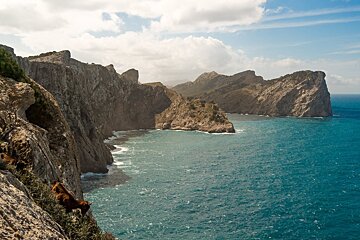
© J. Bennett
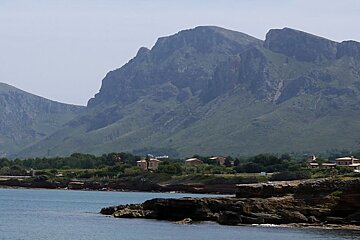
© seemallorca.com
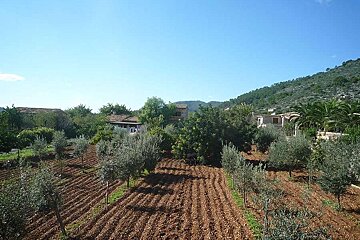
© seemallorca.com
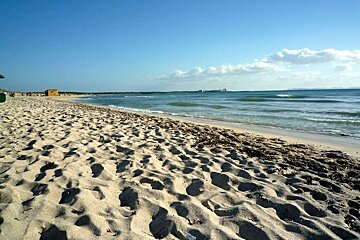
© seemallorca.com

© seemallorca.com
Geography of Mallorca
Discover the Mallorca geography, fauna and flora
Mallorca, at 3,640 square kilometres, is the largest of the Balearic Islands which also comprise of Ibiza, Menorca and Formentera as well as smaller islets like Cabrera and Dragonera. This famous archipelago can be found off the eastern coast of Spain, the country which they are a part of. Geographically, Mallorca is located at a latitude of 39.710358 and longitude of 2.995148. Approximately 130 miles south of Barcelona and 150 miles east of Valencia, the island is around 100km wide from west to east and 75km long from north to south.
The formation of the Balearic islands is estimated to have taken place around 150 million years ago. At first, Mallorca was joined to the Spanish peninsula as an underwater island before its present configuration came into being. For a Mediterranean island, Mallorca is unusually fertile and green. It has an amazing array of natural landscapes from the soaring Serra de Tramuntana mountains in the west, to beautiful agricultural plains in its fertile centre. It is, however, most famous for its golden sand beaches and shallow turquoise waters along its coastline which make it a prime hot spot for holiday makers in the summer months.
Mallorca's population was 859,289 in 2015 and is continuing to increase at a fast rate. More than 50% of the Mallorca's inhabitants live in the capital city of Palma, the business hub bursting with life all year round. The island has a large number of expats from all over the world with a high concentration of Europeans, South Americans and Africans residing here.
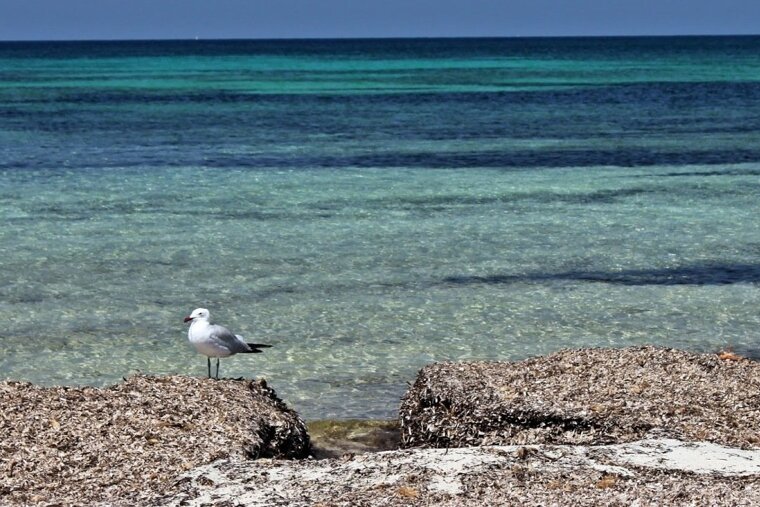
Fauna & wildlife
The vegetation in Mallorca supports surprisingly few land animals. The smallest include field mice, rats, rabbits and wood shrews while the largest are civet cats and a rare wild goat. The island is home to over 300 endemic species of animals, the most famous are the lizards that populate the island of Dragonera.
Birds, on the other hand, have always been plentiful. Even though their habitat is under constant threat the number of bird species comes in at well over 2,000 when counting indigenous and migratory species. Bird watching is particularly prevalent in the north of the island and people come here to search for Audouin’s Gull, Black Vulture, Balearic Warbler, Thekla Lark, Blue Rock Thrush, Spectacled Warbler, Wryneck and Purple Gallinule.
Flora & vegetation
Mediterranean flora dominates Mallorca. Scrub forests of pine, buckthorn, rosemary, wild olive, lentiscus and dwarf fan palms have been the island's main vegetation over the centuries. You will also find holm oak trees thrive in high rainfall areas in the mountains. There have been around 1,500 flowering plants recorded on the island with rockrose, lavender and orchids amongst them. On the coast, in the sand dunes, there are Ammophila grasses. Unfortunately, it is only the pine tree which is not in decline, and this is because of human intervention.
In terms of agriculture, the flat plains in the middle of the island are where most of the holdings are found. Whilst the steepness of some of the slopes in Mallorca make it difficult to farm the land, some of it has been terraced which allows cultivation of olive trees and vines. These are two of Mallorca's main agricultural crops, along with citrus fruits (in particular oranges around the town of Sóller), almonds, grains and a few vegetables.
The island's coastline is also home to large underwater meadows of Posidonia Oceanica seaweed. This endemic species of algae is now protected as it is vital to Mediterranean ecosystems and prevents erosion.

Geology
Much of Mallorca is made up of limestone. This type of rock dissolves over time in water and gives rise to gorges and the many cave systems found in the foothills of the mountainous regions. The fact that limestone creates natural holds is the main reason why the island is very popular among climbers, especially for water soloing on cliffs. The same rock means there are very few lakes on Mallorca as water seeps through to form underground water systems. These basins provide water to the population. The scarcity of rainfall on the island means that the water table is easily challenged and this is a limiting factor when considering further population development.
Landscape & scenery
Mallorca can be divided up into three main areas.
The Serra de Tramuntana mountains run up the western coast for around 90 km. They cover 1,067 square kilometres, making up almost a third of the island, and the highest peak is Puig Major at 1,445 metres. These mountains are a continuation of Betic mountain range on the Spanish mainland. They become steeper the further north you go and, all along the coast, there are cliffs that drop dramatically into the sea. There are a few roads travelling through the mountains but one of the best ways to appreciate the scenery is from the sea on a boat. The other way, of course, is to get your walking boots on and hit the many hiking trails that run from village to village. Much of the area is protected and has been designated a UNESCO site.
To the north east lies a smaller mountain range, the Llevant. You'll find much lower altitudes (around 500 metres) here but equally beautiful and rugged countryside. These hills extend southwards and get steadily lower.
The rest of the island is called Es Pla and possesses fairly flat fertile plain. This is where most of the agriculture takes place as the flat land is ideal for farming. Inland is where you will find lush pine forests, olive, almond, orange and lemon groves and a good selection of vineyards.
Mallorca is justifiably renowned for its beautiful beaches. Its crystalline turquoise waters and fine golden sands mean it lays its claim to possessing some of the finest beaches in Europe.






























